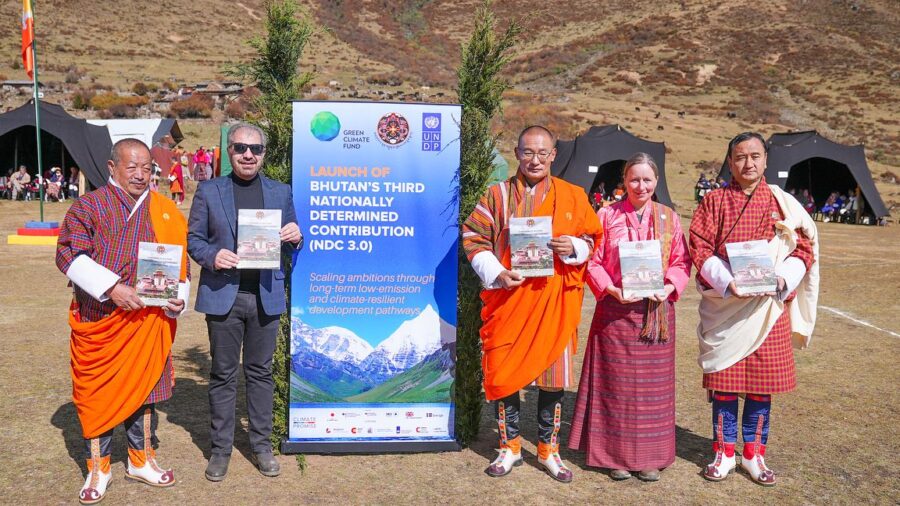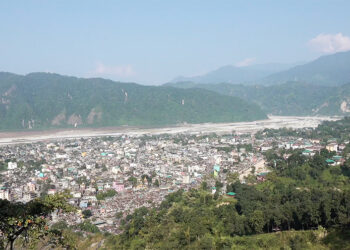
The Prime Minister unveiled Bhutan’s Third Nationally Determined Contribution or NDC during the 8th Royal Highland Festival at Laya in Gasa yesterday. This latest national climate action plan reaffirms the country’s pledge to remain carbon neutral, while setting stronger goals for a resilient, inclusive and sustainable future. Their Majesties The King and Gyaltsuen graced the second day of the Royal Highland Festival yesterday.
In this NDC, covering the period up to 2035, Bhutan reaffirms its historic 2009 commitment to ensure that greenhouse gas emissions do not exceed the carbon sequestration capacity of its forests and land-based sinks.
The NDC outlines an ambitious plan to maintain carbon neutrality by expanding renewable energy and implementing interventions across energy, industry, and agriculture sectors. Crucially, the plan emphasises comprehensive adaptation priorities.
The Prime Minister said, “Our NDC 3.0 aligns fully with Bhutan’s 13th Five Year Plan and 21st Century Economic Roadmap, charting the paths towards low emission, high value growth. Bhutan’s NDC 3.0 is our contribution to this kinetic effort, and we invite partners to join us in translating ambition into tangible action.”
The plan also emphasises that climate adaptation has an urgent priority.
For the first time, Bhutan’s NDC explicitly addresses loss and damage from climate impacts that outpace adaptation efforts including economic and non-economic losses from floods, GLOFs, landslides, forest fires, and slow-onset events such as glacier melt and droughts.
Bhutan calls for international solidarity, including access to the Fund for Responding to Loss and Damage and technical assistance, create a centralised database for tracking losses, and support recovery and rehabilitation.
The country continues to face acute vulnerabilities from climate change, including rising temperatures, erratic rainfall, floods, landslides, and forest fires threatening livelihoods and ecosystem and cultural heritage. This has become a significant concern in the country.
Pema Jamtsho, Laya Mangmi in Gasa said, “Nowadays, snowfalls do not occur on time as they used to. Sometimes it comes early, and sometimes late. Likewise, the mountains around us used to remain covered with snow, but now the snow melts completely during summer. Moreover, our water sources have started drying up, causing water shortage.”
Lobzang Tashi, a resident from Merak Gewog in Trashigang said, “Because of global warming, we may no longer be able to graze our animals in the usual areas. Rising mountain temperatures could cause our yaks to suffer from heat stress, and we risk losing them to the increasingly harsh conditions.”
Kinley Dorji from Laya Gewog said, “We are now seeing many new insects appearing in our area. Even mosquitoes have reached here, whereas before we only heard of them in Gasa. Similarly, some animals from the lower regions are also moving into our area. In fact, we even spotted a gaur here last year.”
Officials said while Bhutan exceeds its fair share in global climate efforts, sustaining carbon neutrality and addressing the loss and damage depends on international cooperation.
There is a need for finance, technology, and capacity-building to counter climate threats.
The climate action plan will be presented to the UNFCCC Secretariat prior to COP 30 in Belem in Brazil next month. As Bhutan charts its path to a tenfold Gross Domestic Product’s growth by 2050, the third NDC reaffirms that environmental leadership is integral to national progress.
Changa Dorji, Gasa
Edited by Tshering Zam








